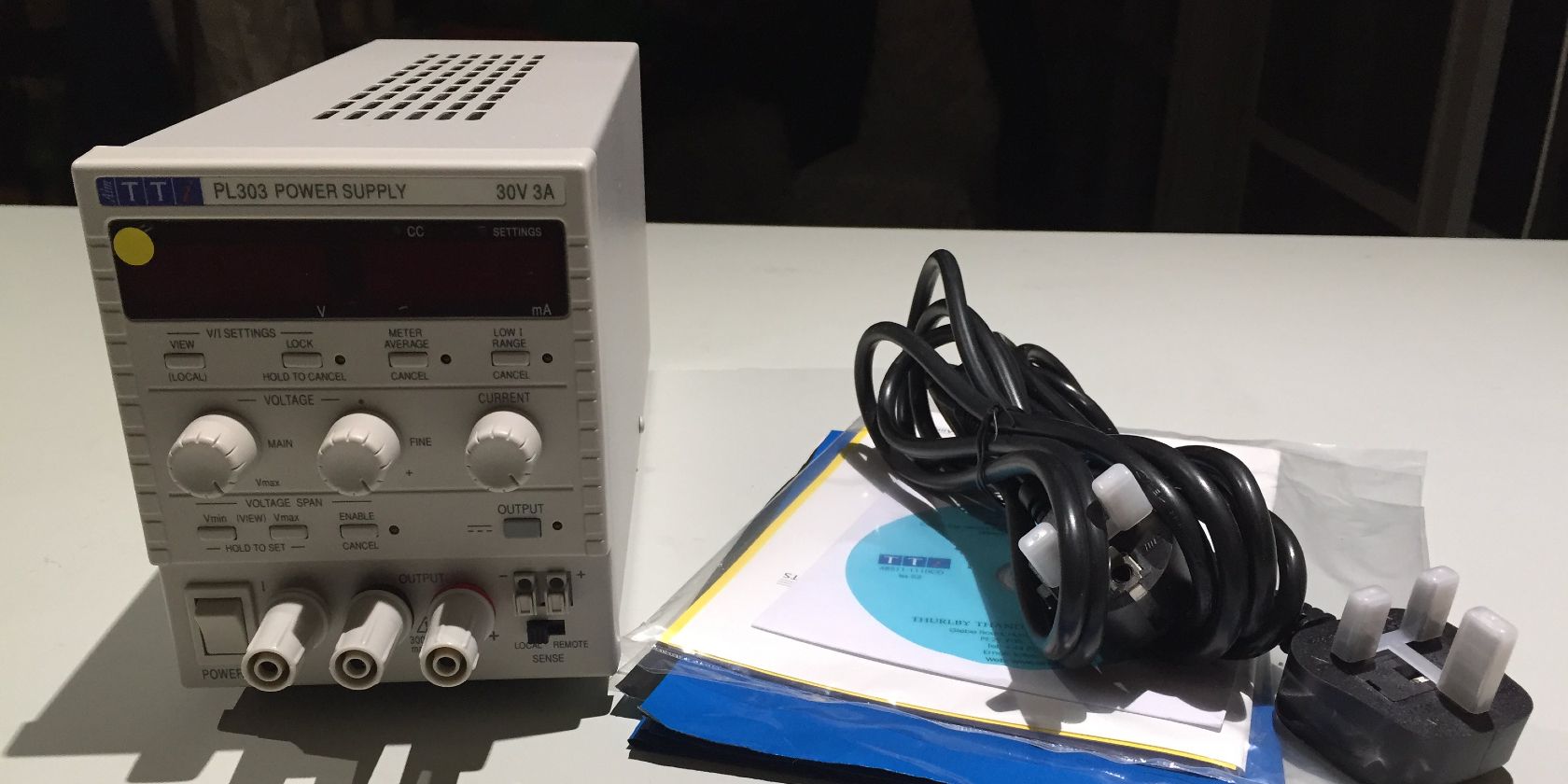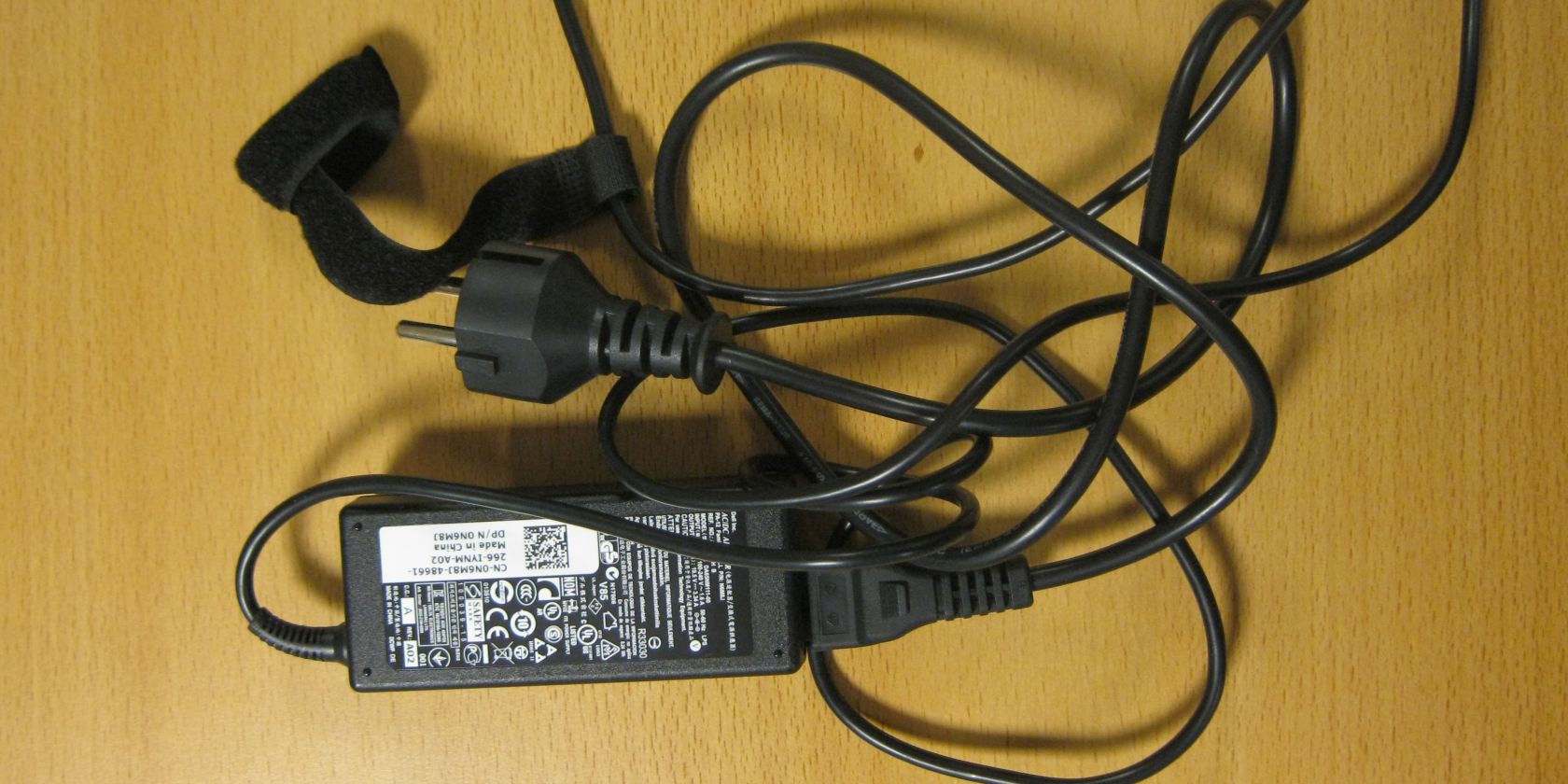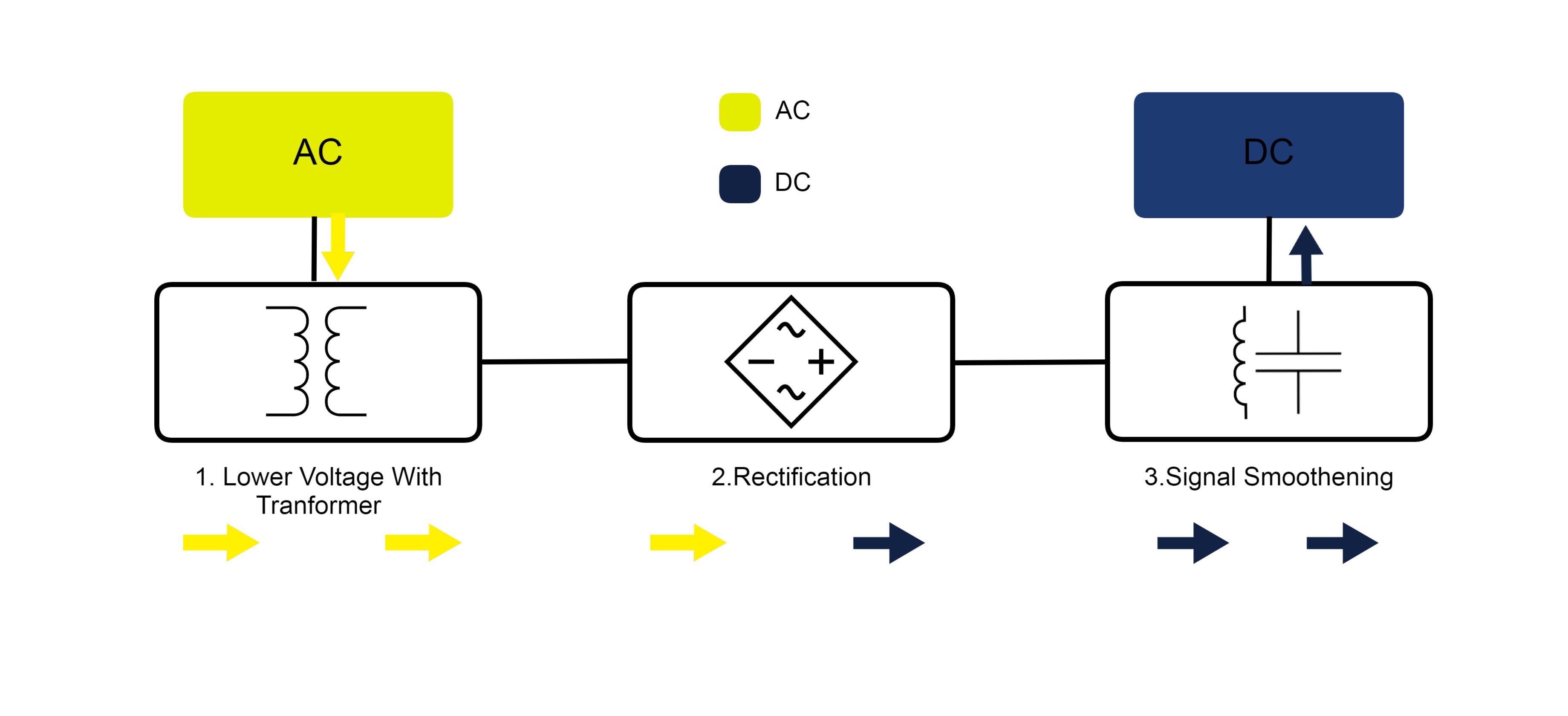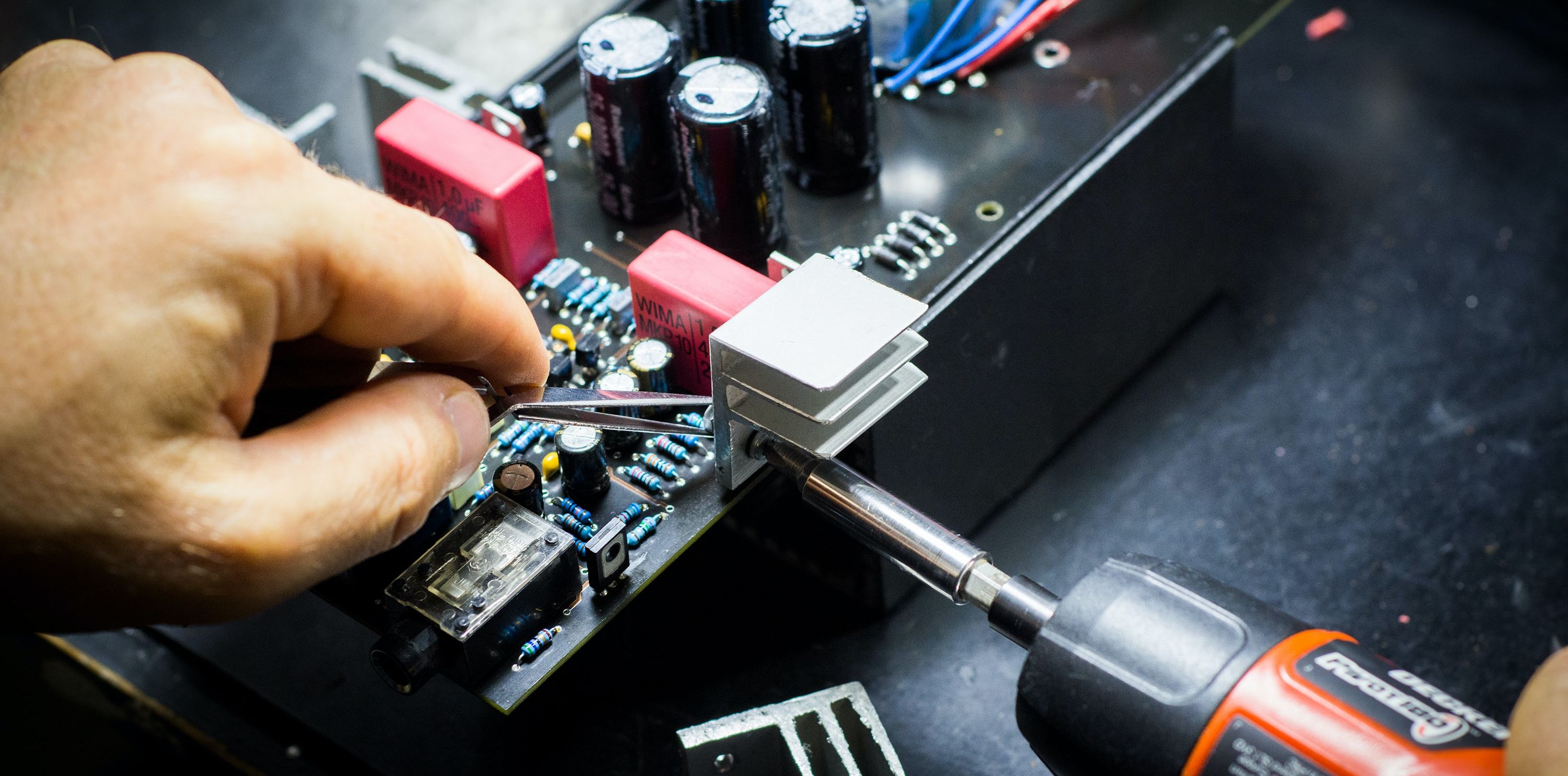You are likely using a smartphone, laptop, or personal computer on a daily basis. These electronic devices use direct current (DC) to work. However, since households are normally powered by high voltage alternating currents (AC), you’ll need to lower the voltage and convert AC to DC by using a power supply such as your power brick or charger.
The most common power supplies used today are the linear and switching power supply. Knowing which one to use for specific applications will keep your electronics safe and working optimally.
Continue reading below for a comparison between linear and switching power supplies.
What Are Linear and Switching Power Supplies?
Linear and switching power supplies are electrical devices used to power and charge DC electronic devices. These devices are tasked to do two things: lower voltage and convert AC to DC. Although both devices lower and rectify power, the difference in how they achieve these tasks makes them better suited for certain applications.
A linear power supply is a device used in low-noise and precision operations. Its use of heavy transformers and analog filters allows this power supply to output clean voltages at the cost of low efficiency, heavier weight, and larger size. Linear power supplies are best used in recording equipment, electric musical instruments, medical equipment, and high-precision laboratory measuring tools.
A switching or switch mode power supply (SMPS) is used for high-efficiency and high-current operations. Unlike linear power supplies, switching power supplies employ the use of solid-state components to modulate and regulate incoming voltages. These power supplies rely on high-frequency switching using power transistors, making them noisy but highly power efficient, lightweight, and compact. Switching power supplies are often used in computers, phone chargers, manufacturing equipment, and many low-voltage electronic devices.
How a Linear Power Supply Works
Using purely analog components available in the 50s, linear power supplies had to rely on heavy power transformers and bulky electrolytic capacitors to lower and rectify voltages. Although transistors were already mass-produced then, high AC voltages simply produced too much heat for transistors to handle.
Here is a schematic of a linear power supply:
A linear power supply works in three steps:
Step 1: Lower the incoming high AC voltage through the use of a transformer.
Step 2: The lowered voltage then goes through a full-bridge rectifier, which rectifies AC voltage to pulsating DC voltages.
Step 3: The pulsating DC voltage signals pass through a filter composed of inductors and capacitors. This smoothening filter removes the signal fluctuations of a pulsating DC voltage, making them usable for delicate electronic devices.
How a Switching Power Supply Works
Switching power supplies are complex devices that use solid-state components to do high-frequency power switching and a smaller ferrite-core transformer. These types of power supplies can raise and lower voltages by using a DC feedback loop to control output voltages.
Here's how they work:
Step 1: The high-voltage AC enters the power supply through a circuit protection module composed of a fuse and an EMC filter. The fuse is for over-voltage protection, and the EMC filter protects the circuit from the signal ripples coming from the unfiltered AC.
Step 2: After making sure the circuit is well protected, the high-voltage AC is then passed through the second module composed of a full-bridge rectifier and smoothening capacitor. The full-bridge rectifier converts AC to pulsating DC, which is then smoothened by a capacitor.
Step 3: The high-voltage DC is then sent through a PWM driver, which takes feedback and controls a power MOSFET which regulates voltage through high-frequency switching. The switching also makes the straight DC current into a square wave.
Step 4: The DC square wave now enters a ferrite-core transformer, transforming the signals back to AC square waves.
Step 5: The AC square waves pass through a bridge rectifier, converting the signal into pulsating DC and then passing it through a smoothening filter. The final output is then used to send signals to the PWM driver, which makes a feedback loop that regulates output voltages.
Linear vs. Switching Power Supplies
There are different reasons why a power supply is chosen to be used on specific applications. These would often include efficiency, noise, reliability and reparability, size and weight, and cost. Now that you have a general idea of how they work, here's how their way of processing energy affects their performance and usability in certain applications.
Efficiency
Because electricity has to pass through a series of electrical and electronic components, the process of rectifying and regulating voltages will always have inefficiencies. But how much?
Depending on how they are rated, switching power supplies can have an efficiency of 80 - 92%. This means that your device can output 80 - 92% of the energy you’ve put into them. Its efficiency comes from using smaller yet efficient components that regulate voltages through high-frequency low voltage switching.
In contrast, a linear power supply can only be 50 - 60% energy efficient due to its use of larger and less efficient components.
Signal Noise and Ripple
Although inefficient, linear power supplies compensate for their inefficiencies through their stable, clean, low-noise signal outputs. A linear power supply’s use of analog components allows them to process the electricity in a smooth and non-switching manner, which makes their output low-ripple or low noise.
On the other hand, switching power supplies rely on high-frequency switching of low voltages to reduce heat, have better efficiencies—and produce lots of noise! The amount of signal noise depends on the design and quality of the specific switch mode power supply.
Size and Weight
The size and weight of a power supply can heavily affect its application on smaller electronic devices. Since linear power supplies use heavy and bulky components, their use on discreet electronic devices is impossible unless you use the power supply as a charger.
As for switching power supplies, since they utilize small and lightweight components, they can be designed to be small enough to become integrated into already smaller devices. A switching power supply’s low weight and small size combined with its power efficiency are what make it applicable to the large majority of handheld electronic devices.
Reliability and Reparability
With lesser parts that could break during operation, linear power supplies offer consistent and reliable outputs. The simplicity in design and use of more common electronic components make it easier for people to source parts and repair linear supplies.
Having more delicate components significantly, switching power supplies is more likely to break before a linear power supply would. However, good design and the use of quality components can make switching power supplies very reliable, maybe even as reliable as linear power supplies. The real problem with switching power supplies is that they are increasingly harder to repair the more complex their design.
Cost-Effectiveness
In the past, linear power supplies were the more cost-effective device due to their simple design and use of lesser components. It also didn’t help that manufacturing semiconductor components were expensive. However, with semiconductors being more in demand, manufacturers were able to scale and make solid-state components exponentially cheaper than before. This, in turn, makes many switching power supply designs more cost-effective than linear power supplies.
Using the Appropriate Power Supply
So that’s about everything you’ll need to know about linear and switching power supplies. To ensure that your electronic devices are safe, always use the original chargers that came with the device, but if they’re not available, you can always buy a power adapter.
Before buying, remember that linear power supplies are ideal for electronics used for precision applications such as electric musical instruments, radios and medical tools, while switching power supplies are used for high-efficiency situations such as computer power supplies, chargers, and lighting.





.jpg)
.jpg)


